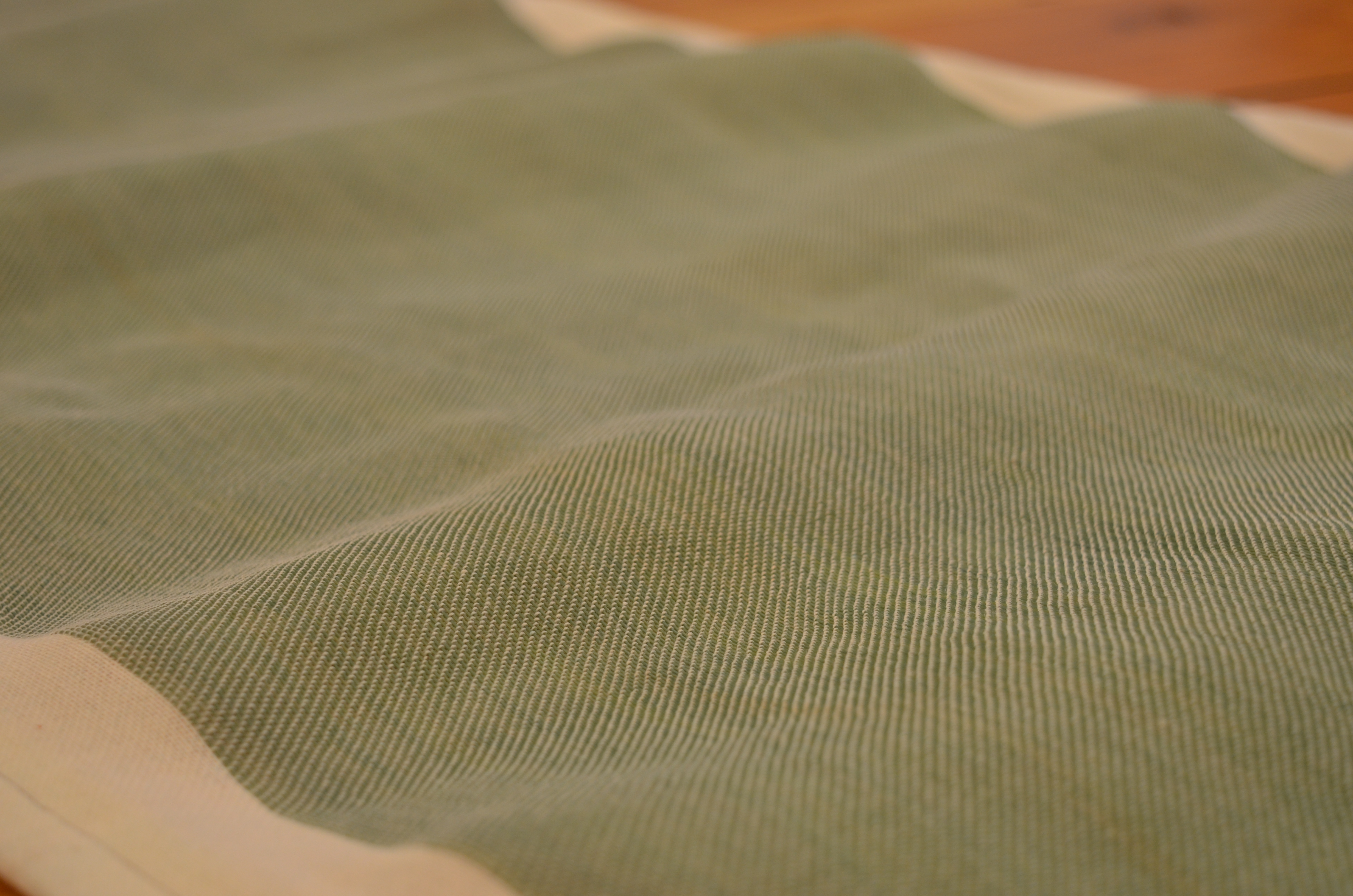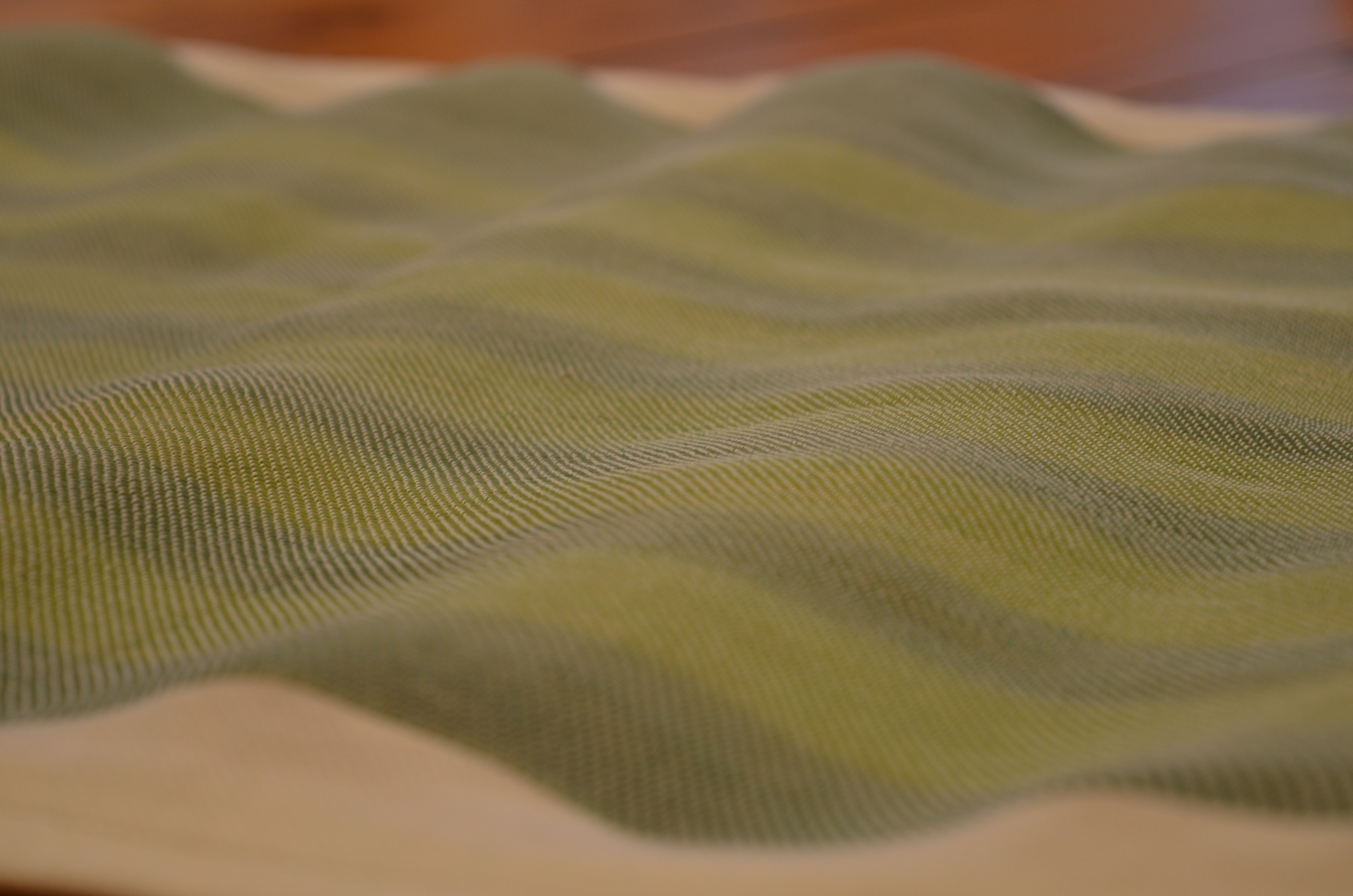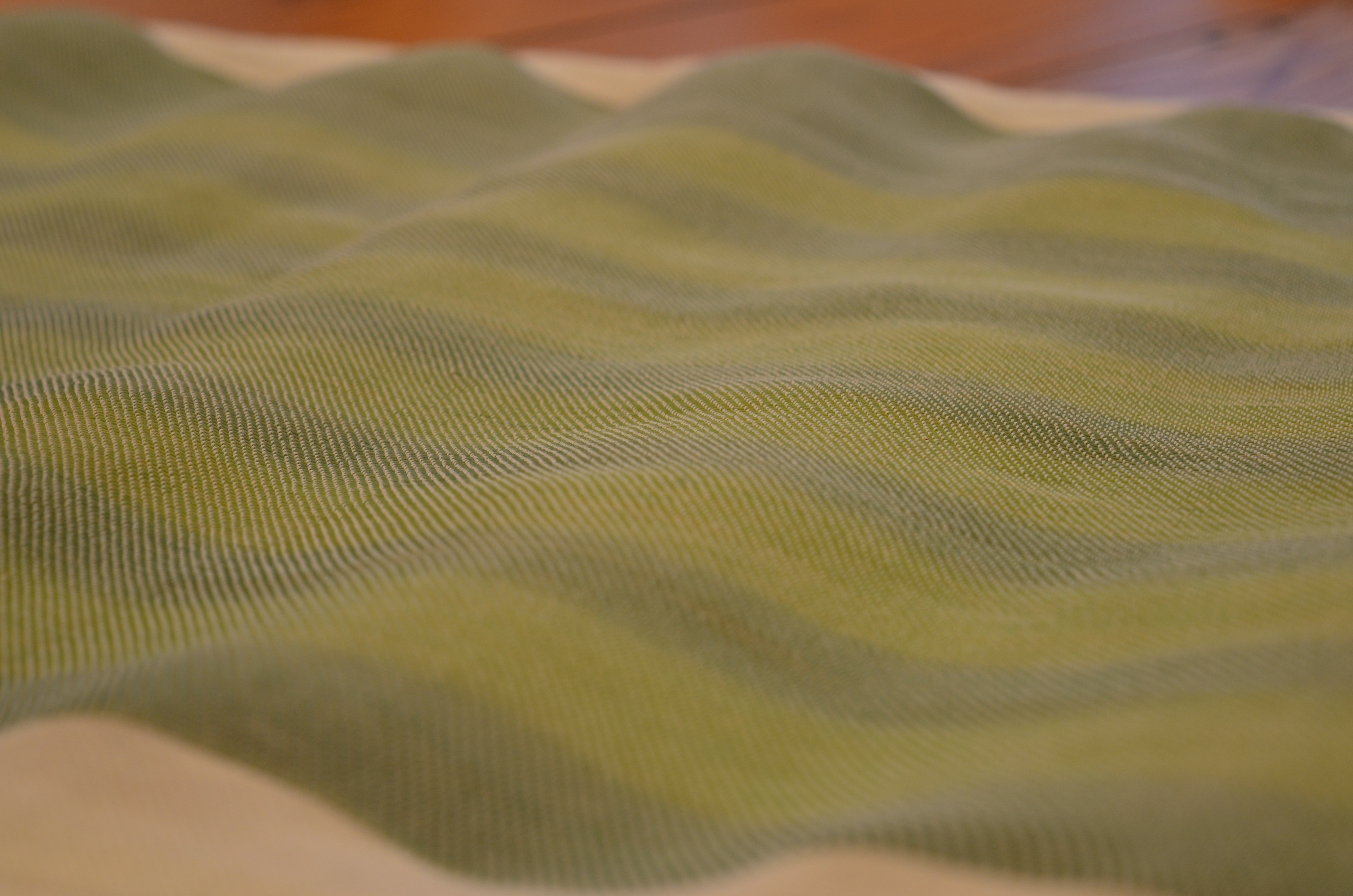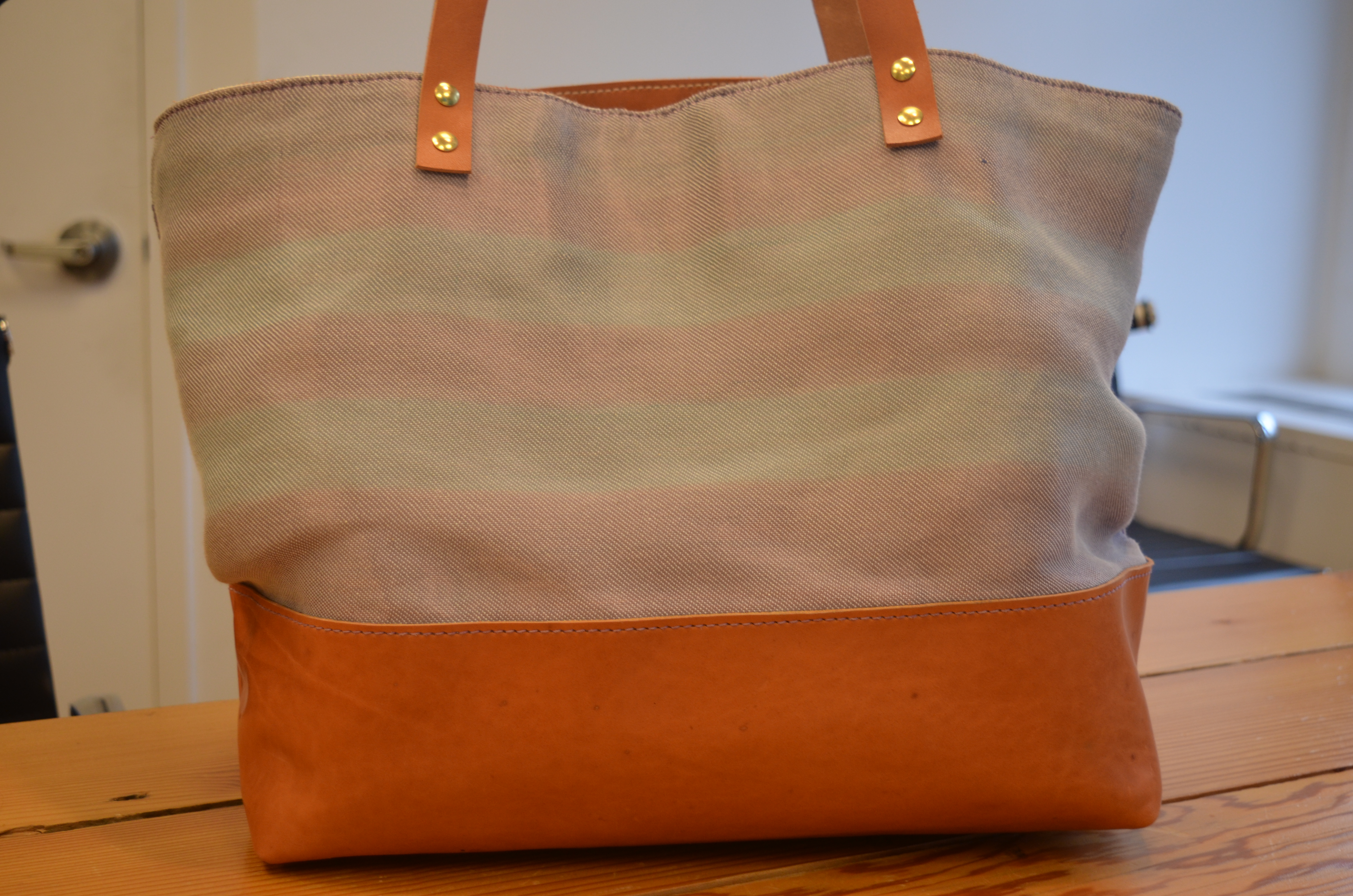With a simple tap on our smartphone, you’re able to control a lot around us — whether it’s the music playing from your Bluetooth speaker, the Netflix show on your TV, or even your AC unit. But what if you could also use your phone to alter what your clothes looked like? That’s where ChroMorphous technology — an active, user-controlled color-changing fabric — comes in.
Developed by a team of research scientists at The College of Optics and Photonics (known as CREOL) at The University of Central Florida, the new technology allows users to control and switch up the pattern on fabric using a mobile app.
Behind the tech
CREOL claims the technology differs from “color-changing” fabrics currently on the market today. Rather than LED tricks emitting light, the fabric physically changes color because of the fiber itself. Produced in Melbourne, Florida, the fibers are created from raw materials using machines that spin fibers for textiles. After shipping the fibers to the mills, it’s weaved using regular industrial-scale weaving machines and then the fabric is shipped back to the CREOL team. While the fabric is produced with traditional machinery, the machine is hacked to run a micro-wire inside each thread so that running a current raises the local temperature a little bit — which is enough for a thermochromic pigment to switch color. Basically, the pigments embedded in the thread respond to a switch in temperature and then change color.
“When you think of anything you work with on a daily basis, whether it’s how you communicate with people [or] buy stuff, it’s infused with technology … The goal here is to now take fabrics and textiles and garments and say let’s infuse that with technology,” Dr. Ayman Abouraddy, professor of optics and photonics at UFC, told Digital Trends, “I want to be able to communicate with it, I want to tell it how to look, and nothing like that has happened yet. Color-changing is one thing, but our vision is to do much more than that as well.”
Upon first glance, the fabric doesn’t look any different than what you’d see on a regular canvas tote bag or even on shoes. Running our hand along the sample, we couldn’t tell that there was any special technology embedded throughout it other than the battery attached on the side. But we did notice it felt rougher in comparison to fabric such as cotton or polyester, which can play a huge role in whether or not a consumer chooses to buy an item they’ll be wearing. But the team explained it’s due to the larger thread, which makes it feel coarse. Currently, CREOL is working toward producing thinner fibers in order for the material to feel smoother and more flexible. The hope is that consumers eventually won’t be able to tell the difference between the technological fabric and regular fabric currently on the market.
“Even Google tried this, and they went the usual route of weaving a metal wire within clothing. Here, the reason it looks so natural is [because] the wire is inside the fiber, so you never touch it, you never come in contact with it,” Abouraddy explained. While Google may have yet to find a way to incorporate color-changing technology within clothing, the company did recently partner with Levi’s to create a wearable electronic jacket. Currently available for purchase, users can control things like music playback and navigation with simple gestures while wearing the denim jacket.
With a collective background in optical fiber manufacturing technology, the team at CREOL admitted this technology isn’t new but it hasn’t gone further than scientific publications. While CREOL claims ChroMorphous is the first of its kind, fashion designer Julianna Bass incorporated a similar concept into her clothing line in September. Even though it wasn’t controlled through an app, the technology includes thermochromic inks that allow for consumers to trigger a color change via a soft button. It has yet to hit the market.
Sitting down with ChroMorphous
After setting up the app on our iPhone, we were able to watch the fabric switch from a solid color to a pattern by simply tapping on a button. While the interface is still in its infancy, the ChroMorphous team is working to develop an app that gives the user full control over the patterns they can choose. As of right now, the app connects to your phone via Wi-Fi, but there are plans to add Bluetooth in the future. Once incorporated into designers’ products, the researchers hope for consumers to use it the same way they would use a Fitbit or Apple Watch — by purchasing the product, downloading the app, and taking advantage of it.
“We hope that in the future people will assume clothes can do more than just protect [you] from the environment. You assume it can do more – so you put on a garment and then look on your phone and see what is available for it do” Abouraddy said, “We are carrying phones anyway — what happened is they put extra stuff in the phone … a camera so now you don’t have to carry a camera. … We wear clothes anyway, so we’re adding functionality to it.”
After opening the app, we had the option adding solid, stripes, or random. We chose the option to add stripes on the fabric and watched every other strip go from dark green to a lightly colored green instead. But each strip is individually controllable depending on the programming — meaning the team can instead allow users to pick specific strips to change color via the app. With the random option, the colors of the strips will change over time.
In terms of choosing your own color options, CREOL explained that’s not yet possible — the technology doesn’t exist yet. For now, the sets of colors you can choose from are set in the factory when manufacturing the fabric, and the app will then tell you which colors are available to choose between. But the team expressed they are working on finding a way to provide consumers with the ability to choose an arbitrary color.
Seeing as how the piece of fabric from the demonstration was larger than what you’d see on a handbag or backpack, it did take about 45 seconds to fully switch over to the new pattern. But the switch can be quicker or slower depending on how much juice you have in your battery. If you need the pattern or color to change quickly, then you’ll take more energy out of your battery than you would by allowing it to change at a slower pace.
When watching the tote bag switch from a solid color to stripes, our initial thought was the amount of money we’d save by no longer purchasing more than one of an item we love in multiple colors. While changing the design of the fabric or color doesn’t completely change the look of the bag, it does provide consumers the opportunity to get even more use out of it than they normally would — knowing they’ll be able to incorporate it into more outfits by customizing it. It can also help during those rare, but realistic, occurrences where you’re wearing the same outfit or item as someone else in the room.
The fabric is also washable — as long as you remove the detachable battery and connector, you’ll be good to go. But CREOL does recommend hanging it to dry rather than using the dryer. If there’s any wrinkles, you can iron it with a steam iron as well.
Wearing ChroMorphous technology
We were excited about the prospect of being able to switch up our wardrobe without having to buy more clothing, but it did leave us with one question — where do you place the battery while wearing the fabric? When it comes to a tote bag or backpack, the battery will sit in an inner pouch or pocket. The team wasn’t so sure when it came to a clothing items such as a dress, suggesting that it may sit on the bra strap but expressing that tests need to be done based on comfort. Then there’s also the possibility of wanting an even bigger battery to power a large item quickly. Questions such as these are what will most likely keep ChroMorphous technology from not hitting the consumer market until next year, as the team works to weed out consumer pain points.
“Somebody had to take that step and bridge that gap between these scientific demos and an actual large scale … it’s now a real technology, not a scientific achievement. And our goal … is to have the designers — the actual producers of textile-based products for the market — be aware of it, and [think] of incorporating it into their product” Abourdaddy said.
While the future of ChroMorphous technology is still unclear, CREOL knows one thing is for certain — it’s officially ready for designers to start using it to produce clothing, accessories, and more. The technology is currently scalable at mass-production levels and doesn’t stop at clothing and accessorie — it can also be used for interior design such as furniture and fixed installations.








